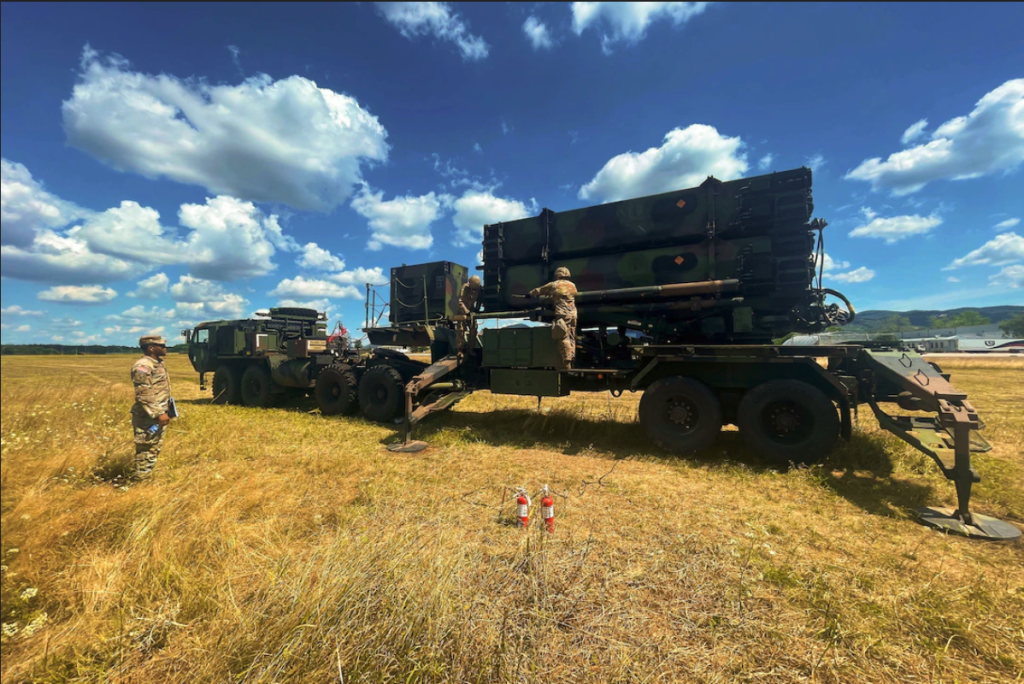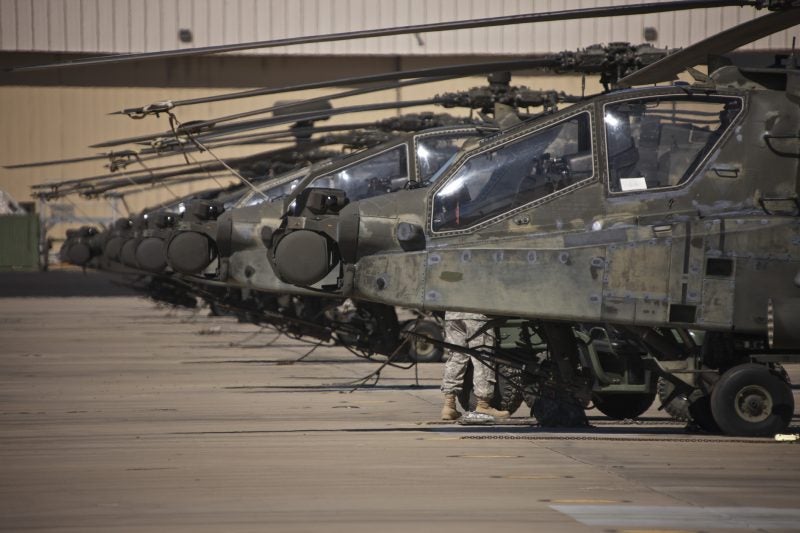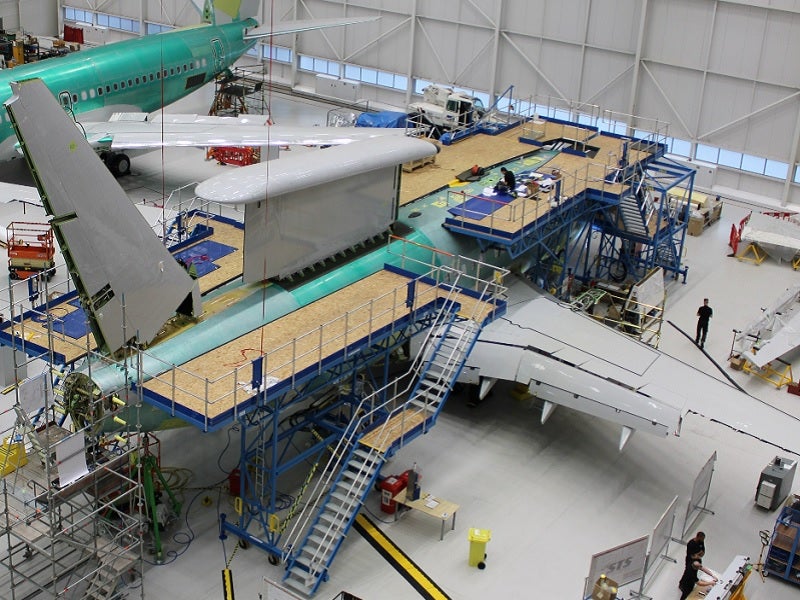
The first military transport aircraft were designed for delivering troops and equipment during World War II. One of the oldest – the Junkers Ju 52 – entered service in 1930 and has flown with 12 air carriers in its time, having prominent military roles in conflicts Colombia, Bolivia and during the Spanish Civil War. By 1938, the German Luftwaffe had 552 in service. It is still used today for tourism purposes.
Today, military transport aircraft perform a range of important duties including mid-flight refuelling, strategic airlifting and electronic warfare capabilities. Here we take a look at some of the largest transport aircraft from around the world.
Antonov An-124 Ruslan
Top of the list of largest military transport aircraft, the Antonov An-124 Ruslan is a four-engined strategic airlift jet. It was designed by Antonov in the 1980s in the former Ukraine Soviet Socialist Republic.
The An-124 Ruslan is a colossus weighing in at 405t at full load. The 69m long aircraft can hold around 430 passengers on palleted seating. Despite carrying such immense weights, the An-124 Ruslan operates a good cruise speed at 497-528mph (800-850km/h). According to estimates, the cost of the An-124 Ruslan is around $70m-100m per unit.
It is currently in service with the Russian Air Force and on 25 March 2019 flew to Venezuela carrying around 100 troops and Russian chief of staff for ground forces Vasily Tonkoshkurov, according to France 24.
A smaller variant – the An-22 Antei – has been in service since 1967, and has a significant payload capacity of 80t.
Lockheed Martin C-5 Galaxy
Airforce-technology.com/wp-content/uploads/sites/4/2019/04/USAF-JASON-MINTO.jpg” alt=”” width=”800″ height=”533″ />
Introduced in 1969, Lockheed Martin’s C-5 Galaxy range has been in service with the US Air Force (USAF) for half a century. Its production, however, has been problematic.
When it was still in its conceptual phase, the C-5A programme was at the centre of a congressional investigation due to cost overruns of $1bn and technical issues with the manufacturing, leading Lockheed Martin to temporarily shut off production. After a failed bid from Iran to reboot the programme in 1974, it wasn’t until 1982 that Congress approved funding for the next-generation variant of the aircraft, known as the C-5B.
Today’s 75m long giant C-5M Super Galaxy variant, first converted in 2006, weighs in at 382t when fully loaded. It has a comparable cruise speed to the An-124 at around 518mph (833km/h), and shares design similarities with the Boeing C-17 Globemaster III.
Boeing C-17 Globemaster III
Like the C-5 Galaxy, the C-17 Globemaster III developed by Boeing is an intercontinental military transport aircraft. Originally part of the McDonnell Douglas family before the merger in 1997, Boeing’s C-17 is smaller than the C-5 at 53m in length and can hold a payload of 77.5t. Despite this, it has a similar cruise speed of 515mph (829km/h).
It is currently in service with the USAF, as well as forces in the UK, Australia, Canada, Qatar, UAE, India, and NATO under NATO’s Heavy Airlift Wing. The C-17 is often used to perform medical evacuation operations and supplies airdrops.
The latest unit cost estimate taken in 2007 priced the C-17 Globemaster III at approximately $218m.
McDonnell Douglas KC-10 Extender

The final US-built military transport aircraft on this list, the KC-10 Extender was introduced by McDonnell Douglas (now part of Boeing) in 1981 under the Advanced Tanker Cargo Aircraft Program.
A military variant of the DC-10 commercial model, the 55m long KC-10 has specific equipment for military transport and aerial refuelling. It has a faster cruise speed of around 565mph (909km/h) and was designed to support the KC-135 Stratotanker, the first jet-powered refuelling tanker.
One of its key design features includes a hose-and-drogue refuelling system that permits interoperability with aircraft in the USAF, US Navy, Marine Corps and allied forces, unlike the KC-135.
The USAF is currently testing CV-22 Osprey rotary wing aircraft with the KC-10 in joint tactical air-refuelling missions and rescue training operations.
Xi’an Y-20
China’s heavy military transport aircraft, the Xi’an Y-20, was introduced just three years ago in July 2016. At 47m long and used primarily for airdropping troops, the Xi’an Y-20 can be reconfigured for early warning and control capabilities, anti-submarine warfare and aerial refuelling.
The People’s Liberation Army Air Force has reportedly ordered 400 Y-20 aircraft, of which seven are currently in service, according to Flight Global’s World Air Forces Directory 2019.
Ilyushin Il-76

Russia has produced three Il-76 variants since its original introduction in 1974, ranging from a total payload capacity of 40t-60t.
The 47m long aircraft has been used with many air forces including Ukraine, China and Syria, and also has an armed capability including two radar-directed cannons and two external under-wing hardpoints that can hold bombs up to 500kg in weight.
In 2014, production of the latest Il-76MD-90A model began and the Russian Air Force received its first of 39 modernised Il-76 aircraft from its Ulyanovsk plant under a $4bn contract.
An Angolan Il-76 has recently been deployed to parts of Mozambique, Malawi and Zimbabwe to supply aid in light of the recent Cyclone Idai.
Airbus A330 MRTT
Perhaps one of the more popular military transport aircraft, the Airbus A330 Multi-Role Tanker Transport (MRTT) aircraft has been ordered by the air forces of 12 nations including the Royal Air Force, as well as the air forces of Australia, Saudi Arabia, France, the UAE and Singapore. A total of 60 aircraft were ordered by the 12 nations and, as of the end of 2018, 33 have been delivered.
The original commercial version – the A330 – is built in Toulouse, France, and converted at the Airbus Military Conversion Centre in Getafe, Spain, where it is fitted with military avionics and refuelling capabilities.
The 59m long aircraft has a cruise speed of around 534mph (860km/h) and can carry a 45t non-fuel payload. Its primary roles include a dual-role air-to-air refuelling system.




